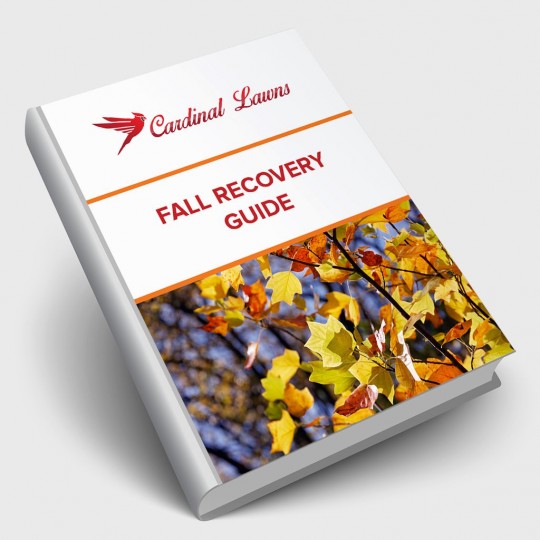5 Ways to Keep Your Lawn Healthy this Winter
So it Bounces Back Beautifully in the Spring
Posted
December 12, 2024

Now that the weather is cooler and winter is right around the corner, your grass is in the process of going dormant. Just because the grass isn’t actively growing doesn’t mean it’s not prone to problems. Here are tips to help keep your lawn healthy over the winter so it wakes up on the right side of spring.
Preparing Your Lawn in the Fall
Keeping your grass healthy in the winter requires preparation in the fall. Here’s a recap of the fall lawn maintenance tasks.
- Aerate to improve air flow, water absorption, and nutrient penetration to the roots.
- Use a winterizing fertilizer to strengthen grass roots and help them store nutrients for optimal spring growth.
- Gradually reduce mowing height to prevent grass blades from matting under snow while maintaining enough length for photosynthesis.
- Manage fallen leaves and debris to prevent fungal diseases and ensure grass receives adequate sunlight.
- Overseed bare spots to help establish a thicker lawn that can better resist winter stress.
- Water the lawn as needed until the ground freezes to ensure the soil has sufficient moisture, but reduce frequency as temperatures drop, as over-saturation can lead to root rot or ice damage.
Even if you didn’t check all of these items off the list, there are still ways to help make sure your lawn survives the season.
Tips for a Healthy Winter Lawn
If the cold weather snuck up on your before you were able to fully prepare your lawn, don’t worry. Keep these tips in mind over the winter to help keep it protected.
- Don’t fertilize or overwater. Even if you didn’t get to it in the fall, doing so now will not be as effective on frozen soil.
- Avoid walking on the grass when it’s frozen or covered in snow, as this can damage the turf and compact the soil.
- Use non-toxic de-icing products on your driveways and walking paths to prevent salt damage to the grass and soil structure.
- Control rodents, like mice and voles, with repellents and barriers so they don’t burrow under snow-covered grass and damage roots.
- Keep an eye out for snow mold, a common winter fungal disease. Prevent it by raking matted grass and improving drainage.
If you do notice signs of disease or want to start planning for next season, there are ways to help jumpstart spring recovery.
Seeing Better Results in the Spring
If your grass doesn’t bounce back as quickly once it starts to warm up again, there are ways to help expediate the process.
- Test the soil’s pH and nutrient levels in early spring to determine if any adjustments are needed, then fertilize as needed.
- Once the snow melts and the ground thaws, clean up debris and reseed any damaged areas to encourage new growth. Choose a cool-season grass type that’s more resilient in colder climates.
- Apply a thin layer of mulch around sensitive areas to retain heat and moisture.
With consistent preparation and care, your lawn can make it through the winter months and return to its lush, green state when warmer weather returns.

Download Your FREE Fall Recovery Guide
Summer’s extreme conditions can take a toll on your grass and its health. Take some time to learn how to bring your lawn back to life. This handy guide teaches you what needs to be done for a full fall recovery.